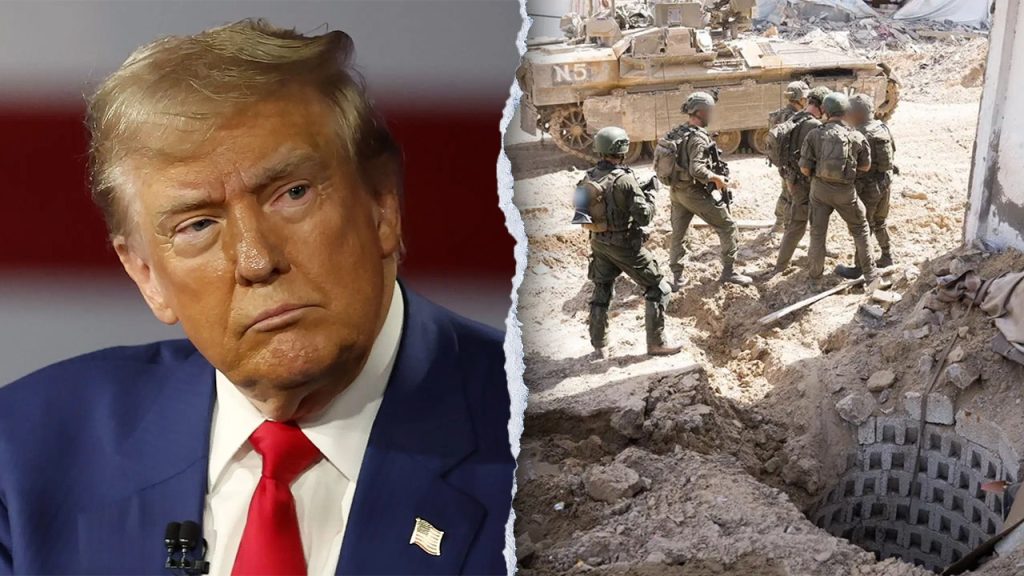The aftermath of Israel’s military operation in Gaza presents a complex and multifaceted challenge, with the future of the region hanging in the balance. The displacement of nearly 1.9 million people within Gaza has drawn international scrutiny, and the lack of a clear roadmap for the post-conflict period fuels uncertainty. While there’s a consensus that the new Trump administration’s policies will heavily influence Gaza’s trajectory, the specifics remain unclear, leaving Israeli officials in a state of anticipation. The potential for the “Trump effect” to reshape the dynamics and apply unprecedented pressure on Hamas is a significant factor in the unfolding scenario.
Israel’s Defense Minister, Israel Katz, has articulated a vision for Gaza that emphasizes maintaining full security control after Hamas’s military and political power is neutralized. This stance has ignited debate, particularly regarding the proposed establishment of a “technocratic” body to manage Gaza’s infrastructure, humanitarian aid, and reconstruction. This body, potentially composed of Palestinian figures independent of Hamas, suggests a shift in power dynamics and a desire to prevent terrorist regrouping and attacks against Israel. While Israel intends to retain security control and the ability to conduct military operations, the idea of re-establishing settlements has been explicitly ruled out. There’s a growing desire to involve Arab nations, particularly the UAE, Saudi Arabia, and Egypt, in the reconstruction efforts, signaling a potential for regional collaboration in shaping Gaza’s future.
Despite the focus on security and reconstruction, senior IDF officials have voiced concerns about the absence of a comprehensive strategic plan for the post-conflict phase. They warn that without viable alternatives to Hamas, the cycle of violence is likely to persist. The terror group, if not supplanted, could rebuild its power and reignite conflict, rendering the military achievements of the operation temporary. This concern is compounded by the uncertainty surrounding U.S. policy under the incoming Trump administration, further complicating efforts to formulate a coherent long-term strategy. The complex regional landscape, including ongoing issues with Lebanon, Iran, the Houthis, and Syria, has also diverted attention from developing a detailed plan for Gaza’s future.
Several competing proposals for Gaza’s future have emerged, reflecting the diverse perspectives within Israel. Retired Major General Giora Eiland advocates a more assertive military approach, proposing the evacuation of northern Gaza and its subsequent encirclement and siege to pressure Hamas into submission and secure the release of hostages. Eiland’s long-term vision involves Israel maintaining military control over parts of Gaza without establishing settlements or civilian presence. He believes this strategy, supported by his interpretation of international humanitarian law, would weaken Hamas by depriving them of territory. However, critics argue that such a drastic approach could exacerbate the humanitarian crisis and potentially escalate the cycle of violence.
In contrast, Major General (res.) Amos Yadlin favors a diplomatic solution, suggesting a mechanism of Palestinian technocrats mentored by Arab states like Egypt, Saudi Arabia, UAE, Jordan, and Morocco. This approach emphasizes the role of Arab influence in stabilizing Gaza after Israel dismantles Hamas’s military infrastructure. Yadlin envisions Hamas potentially transforming into a political party upon accepting the Quartet conditions from 2017, which include recognizing Israel and condemning terrorism. While Yadlin’s approach prioritizes diplomacy and regional cooperation, the current Israeli government remains opposed to any involvement of the Palestinian Authority (PA) in Gaza’s post-Hamas governance.
The exclusion of the PA from Gaza’s future governance raises critical questions about the region’s political stability. While Israel favors a technocratic model, its viability without the PA’s involvement remains uncertain. This disagreement underscores the challenges of establishing a sustainable governing structure for Gaza that addresses both security concerns and the needs of the Palestinian population. Meanwhile, the UAE has emerged as a crucial player in Gaza’s future, a role accepted by all sides. Its willingness to contribute to humanitarian aid and reconstruction efforts has positioned it as a potential stabilizing force in the region. Israel welcomes this involvement, but its focus remains firmly on security, determined to prevent Hamas from regaining control and returning to the pre-conflict status quo. The future of Gaza thus hinges on navigating these complex dynamics, balancing security imperatives with the urgent need for humanitarian assistance and sustainable political solutions.

